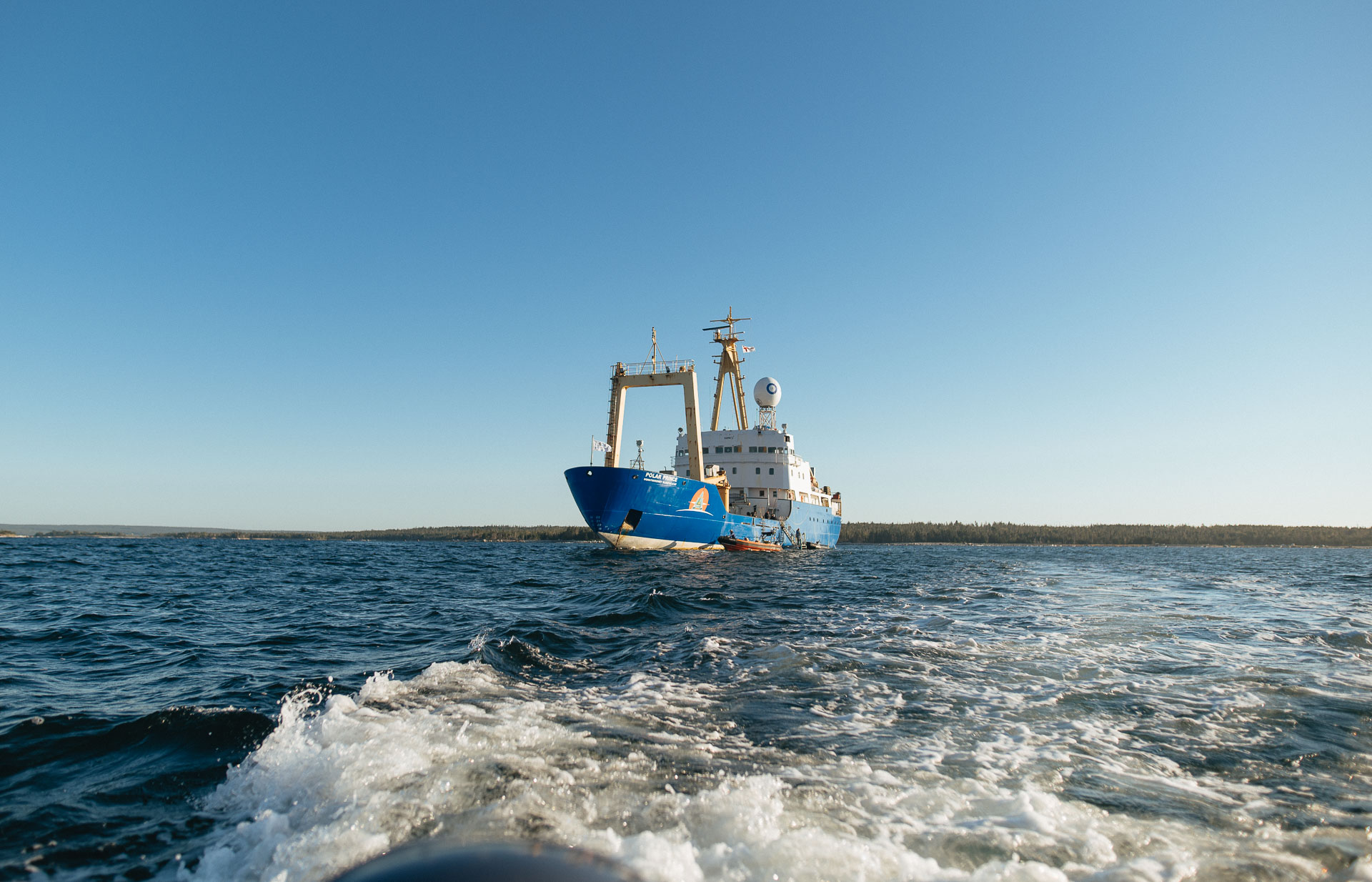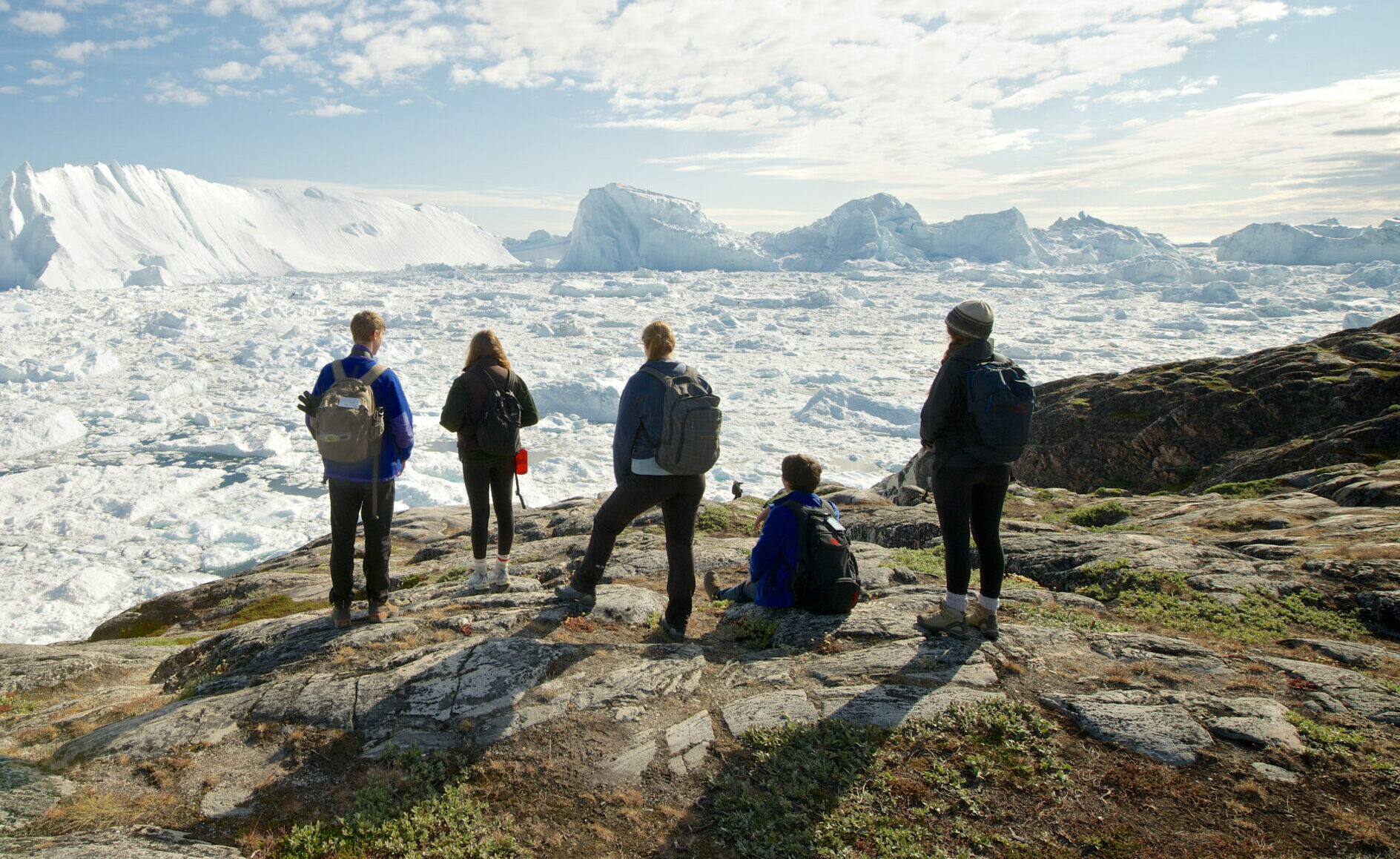Kalaallit Nunaat to Nunavut Expedition: Update Four
After crossing Davis Straight and entering the waters of Nunavut, we were overjoyed to learn that we would be visiting both Mittimatalik (Pond Inlet) and Ikpiarjuk (Arctic Bay). Both communities offered a warm welcome to SOI participants. Onshore, many SOI staff and educators were embraced with big bear hugs as they reconnected with friends and SOI alumni. Both communities shared beautiful cultural performances with ethereal singing and music, athletic prowess, and many laughs. The strength of Inuit culture was juxtaposed with the apparent challenges of life in the North. SOI participants walked through the aisles of grocery stores and gained a new appreciation of food and economical scarcity in the North. Our experiences in Canadian Inuit communities offered us all the chance to reflect on how systemic changes in food systems and ecotourism may build prosperous communities in the future. As a group, we analyzed principles of regenerative tourism and brainstormed avenues by which expedition travel can elevate the communities that are visited and create thoughtful visitor experiences.

After visiting Mittimatalik, we made an overnight transit across Tallurutiup Imanga and awoke to the commanding vista of Croker Bay around us. For those SOI participants who were out on deck early, the ecological richness of this area immediately revealed itself. Excitement began to bubble as sightings of seals and seabirds accumulated. Incredibly, our very own SOI participant Gabrielle managed to spot the first polar bear of the journey! In short order, we quickly boarded zodiacs to gain a closer perspective, yet from a safe distance. Amongst a cathedral of ice and steep mountains, we watched a polar bear devour a seal atop an iceberg at the foot of a massive tidal glacier. By deploying a unique hunting technique, this bear successfully caught a seal by leaping from an iceberg and surprising it. In the context of climate change, polar bears will increasingly need to use melting pieces of glacial ice, as opposed to multi-year sea ice, as a platform to hunt seals. Watching an intelligent, flexible apex predator finding success amongst a melting glacier provided us all with hope that ecological communities will persist in the face of rapid change.

As we navigated further northwest, the temperature dropped and clouds engulfed the sky. Upon arrival at Beechey Island, snow blanketed the beach and created an eerily beautiful atmosphere for our visit. On this island, numerous historical threads coexist to create a tapestry of Arctic history. Immediately underfoot, we noticed the stunning fossils of marine invertebrates that inhabited an alien world hundreds of millions of years ago. Subsequently, we visited the graves of crewmembers of the failed Franklin expedition of 1845. With the fossils underfoot, the colonial graves in front of us, and the Inuit youth among us, we were all called to consider our current role in creating the history of our land.

Finally, to conclude our expedition, Peter Berthelsen and Iben Lange (renowned Greenlandic chefs, and Quark Expedition Staff) surprised SOI staff and participants with a marvelous “Tundra to Table” culinary experience. With skill, cultural wisdom, and generosity, they created delicious food that warmed the bellies and hearts of us all. In the spirit of reciprocity, we were all compelled to express our gratitude towards Peter, Iben, and the entire Quark Expedition team in the form of thank-you letters and small gifts of appreciation. As our journey came to a close, we were all encouraged to reflect upon our experiences and carry with us the teachings of the land and people of the North.





